Contents
Table Leaf What it is and How to Use It
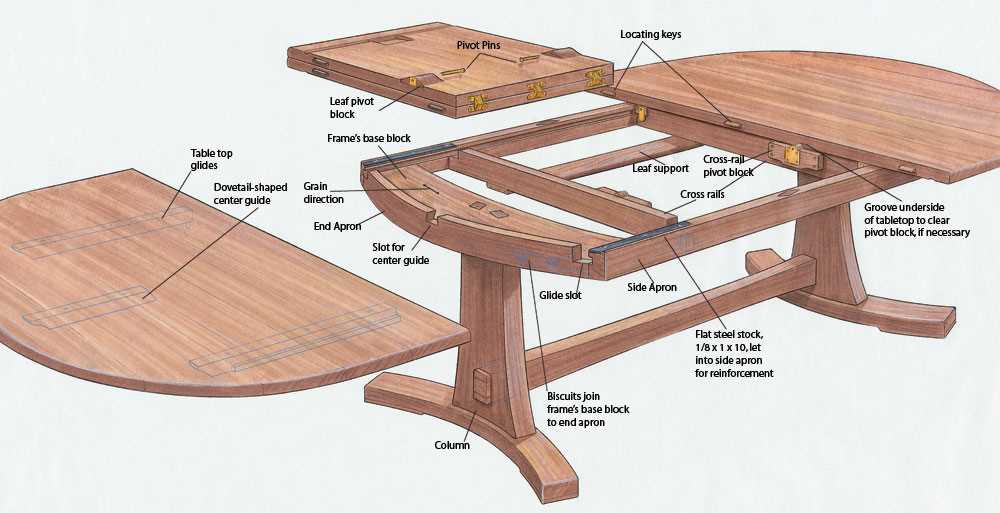
A table leaf is a removable extension that expands the surface area of a table. It is commonly used in furniture, particularly in dining room tables, to accommodate more people or provide additional space for various activities.
The table leaf is typically made of the same material as the table, such as wood, and is designed to seamlessly blend with the rest of the table when in use. When not in use, it can be easily stored away, making it a practical and versatile addition to any dining room.
The foldable nature of the table leaf allows it to be effortlessly extended or retracted, depending on the needs of the users. This feature makes it possible to adjust the size of the table to accommodate a smaller or larger number of guests, making it ideal for hosting events or gatherings.
Using a table leaf is simple and straightforward. To extend the table, one needs to unlock the mechanism holding the leaf in place, usually located underneath the table surface. Once unlocked, the leaf can be gently pulled apart from the table, extending the surface area. To retract the leaf, the process is reversed, and the leaf is folded back into its original position.
What is a Table Leaf?
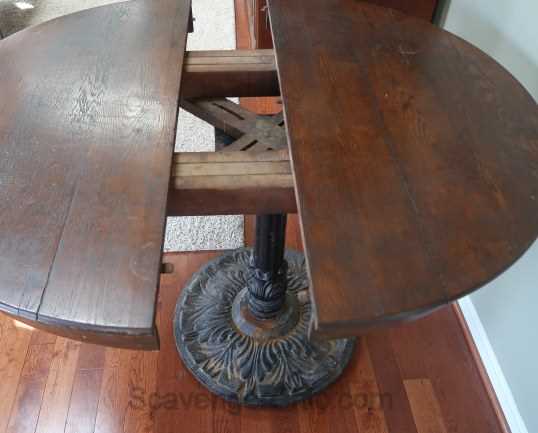
A table leaf is an additional piece or section that can be added to a dining table to increase its size and seating capacity. It is also known as a table extension or a table insert. The table leaf is typically made of the same material as the rest of the table, such as wood, and is designed to seamlessly blend in with the original surface.
The main purpose of a table leaf is to provide extra space for accommodating more people during special occasions or when hosting larger gatherings. By adding the table leaf, the dining table can be extended to create more room for additional chairs or seating arrangements.
Table leaves are usually foldable, allowing for easy storage when not in use. They can be inserted and removed from the table with relative ease, making it convenient to adjust the table size as needed.
Table leaves come in various shapes and sizes, depending on the design and dimensions of the dining table. They can be rectangular, square, round, or oval, and are often custom-made to fit specific tables.
When using a table leaf, it is important to ensure that it is properly aligned and secured to the table. This can be achieved by following the manufacturer’s instructions or using the provided locking mechanisms. By doing so, the table leaf will be stable and secure, providing a seamless extension of the table surface.
Overall, a table leaf is a versatile piece of furniture that allows for flexibility in dining arrangements. Whether it’s for hosting large gatherings or simply creating more space in the dining area, a table leaf is a practical and functional addition to any dining table.
Benefits of Using a Table Leaf
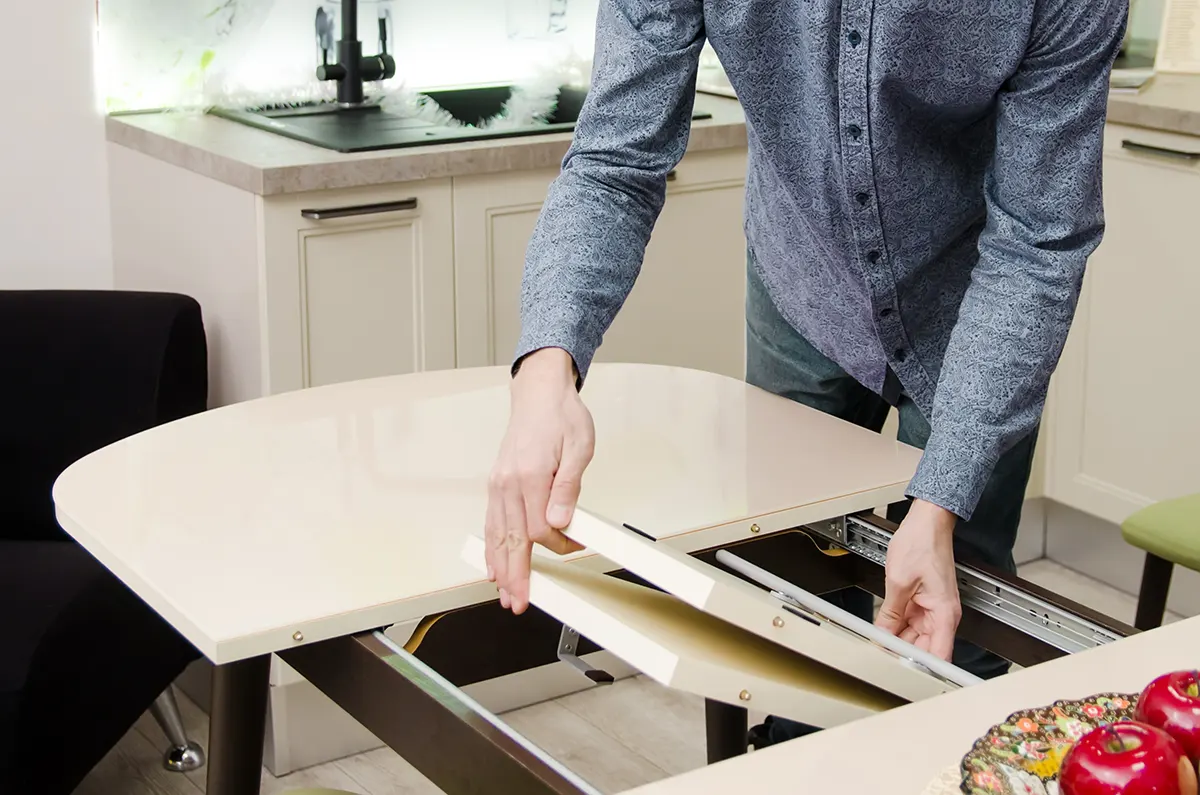
Using a table leaf can provide several benefits, making it a valuable addition to any dining room. Here are some of the advantages of using a table leaf:
- Extra Surface: A table leaf is a wooden extension that can be added to a dining table, providing additional surface area. This allows you to accommodate more guests and provide a comfortable dining experience.
- Versatility: Table leaves are foldable and can be easily stored when not in use. This makes them a versatile option as they can be added or removed as needed, depending on the number of guests or the size of the dining room.
- Flexibility: By using a table leaf, you can easily transform a small dining table into a larger one, providing flexibility for various occasions. Whether you are hosting a dinner party or a family gathering, a table leaf allows you to adjust the table size to meet your needs.
- Enhanced Aesthetics: Table leaves are designed to seamlessly blend with the existing table, maintaining the same wood finish and style. This ensures that the extended table looks cohesive and aesthetically pleasing, enhancing the overall look of your dining room.
- Convenience: Adding a table leaf is a simple and quick way to create additional space without the need for purchasing a new dining table. This can save you time and money, as well as provide a convenient solution for accommodating extra guests.
Overall, using a table leaf offers numerous benefits, including extra surface area, versatility, flexibility, enhanced aesthetics, and convenience. Whether you have a small dining room or frequently host gatherings, a table leaf can be a valuable addition to your dining table.
Different Types of Table Leaves
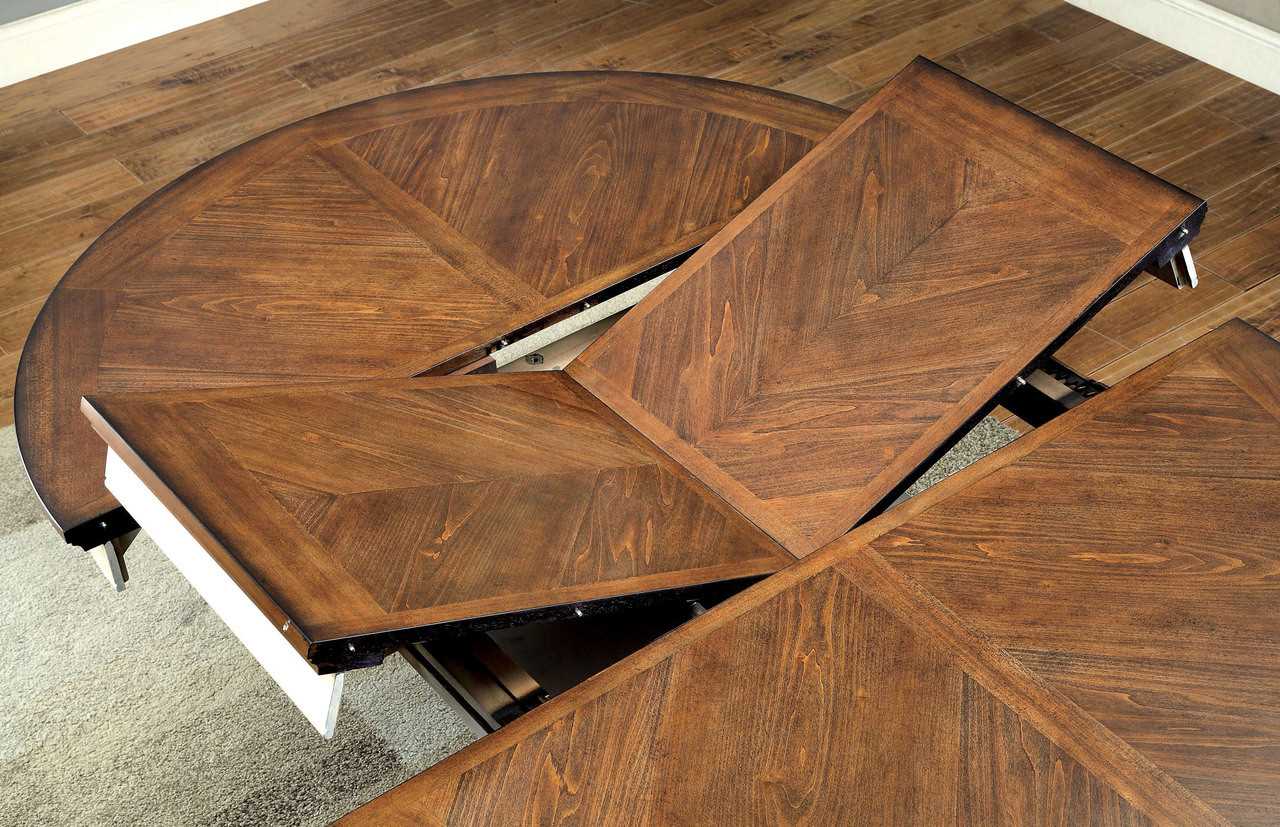
When it comes to furniture, dining tables are an essential piece that brings people together for meals and gatherings. One feature that can greatly enhance the functionality of a dining table is a table leaf. Table leaves are extension pieces that are added to the surface of the table to create extra space for seating and serving. There are different types of table leaves available, each with its own unique characteristics.
1. Drop-leaf table: A drop-leaf table is a type of table that has hinged leaves on either side that can be folded down when not in use. This type of table leaf is ideal for small spaces as it can be compacted to save space and extended when needed.
2. Butterfly leaf: A butterfly leaf is a self-storing table leaf that is hidden underneath the table surface. When the table needs to be extended, the butterfly leaf is unfolded and locked into place, creating additional space. This type of table leaf is convenient as it eliminates the need for additional storage space.
3. Extension leaf: An extension leaf is a separate piece that is added to the table to extend its length. It is typically stored separately when not in use. Extension leaves can be made of the same wood as the table or a different material, depending on the design and style of the table.
4. Flip-top table: A flip-top table has a hinged top that can be flipped over to reveal a hidden table leaf underneath. This type of table leaf is versatile as it allows for easy extension and can be conveniently tucked away when not in use.
5. Slide-out leaf: A slide-out leaf is a table leaf that is stored within the table and can be pulled out when needed. This type of table leaf is often made of the same wood as the table and seamlessly blends in with the rest of the table surface.
With the variety of table leaves available, it is important to consider the specific needs and space requirements when choosing a dining table. Whether it’s a foldable drop-leaf table or a hidden butterfly leaf, table leaves can provide the flexibility and convenience needed for different dining occasions.
Section 2: How to Use a Table Leaf
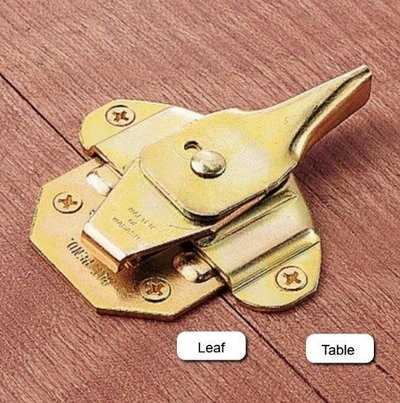
A table leaf is a removable surface that can be added to a dining table to extend its size and accommodate more people. It is typically made of the same material as the table, such as wood, and is designed to seamlessly blend with the rest of the table.
Using a table leaf is a simple process that involves unfolding and attaching the leaf to the table. Here are the steps to use a table leaf:
- Start by clearing the table surface of any items, such as plates, glasses, or decorations.
- Locate the table leaf. It is usually stored separately from the table and can be found in a designated storage area.
- Unfold the table leaf carefully to avoid damaging it. Most table leaves are foldable for easy storage.
- Place the unfolded table leaf on top of the dining table. Make sure it aligns properly with the existing surface.
- Secure the table leaf to the table using the provided locking mechanism or clips. This will ensure that the leaf stays in place during use.
- Once the table leaf is securely attached, check for any gaps or unevenness between the table leaf and the original surface. Adjust as necessary to create a smooth and seamless extension.
- After using the table leaf, remove it by unlocking the mechanism or releasing the clips. Carefully fold the table leaf and store it in its designated area.
It’s important to note that not all dining tables come with a table leaf. If you’re considering purchasing a dining table with an extension capability, make sure to check if it includes a table leaf or if it can be purchased separately.
Using a table leaf can be a convenient way to accommodate more guests or create additional surface area for special occasions or gatherings. With proper care and maintenance, a table leaf can extend the functionality and versatility of your dining table.
Step-by-Step Guide to Installing a Table Leaf
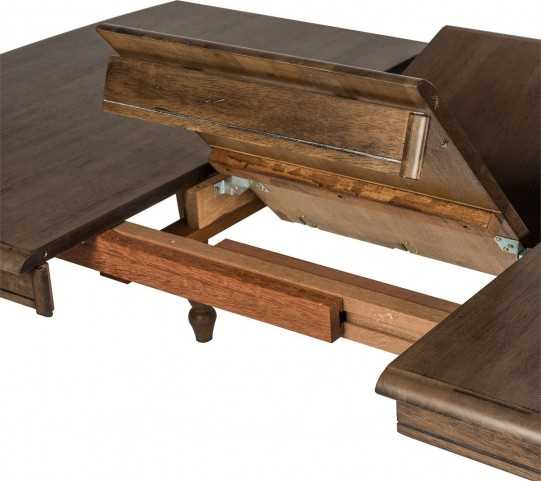
Installing a table leaf is a simple process that can expand the surface area of your dining table. With a table leaf, you can easily accommodate more guests and create a spacious dining experience. Follow these steps to install a table leaf:
- Prepare the table: Clear the surface of the table and remove any items that may obstruct the installation process. Ensure that the table is clean and free of dust or debris.
- Locate the table leaf: Find the table leaf that matches the design and dimensions of your table. Most table leaves are made of wood and are foldable for easy storage.
- Identify the extension mechanism: Examine the table and locate the extension mechanism. This may include metal slides or brackets that allow the table leaf to be securely attached.
- Align the table leaf: Place the table leaf on top of the table, aligning it with the existing surface. Make sure the edges of the table leaf match up with the edges of the table.
- Secure the table leaf: Use the extension mechanism to secure the table leaf to the table. This may involve sliding the metal slides or attaching the brackets to the underside of the table leaf.
- Test the stability: Once the table leaf is secured, gently test its stability by applying pressure to different areas. Ensure that it is firmly attached and does not wobble or move.
- Verify the alignment: Check that the table leaf is properly aligned with the rest of the table. It should be level and flush with the existing surface.
- Enjoy the extended surface: With the table leaf installed, you can now enjoy the extended surface area of your table. Arrange additional chairs and invite more guests to share a meal in your expanded dining room.
Installing a table leaf is a straightforward process that can greatly enhance the functionality of your dining table. By following these steps, you can easily create a larger surface area for your dining needs.
Tips for Properly Using a Table Leaf
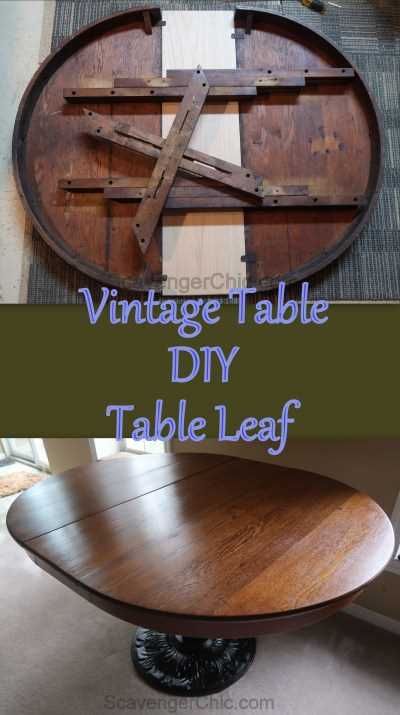
A table leaf is a removable extension piece that allows you to increase the surface area of your table. It is typically made of wood and is foldable for easy storage when not in use. Using a table leaf can be a great way to accommodate more guests or create extra space in your room. Here are some tips for properly using a table leaf:
- Ensure a proper fit: Before using a table leaf, make sure it fits securely into the table. The leaf should align with the edges of the table and sit flush with the surface.
- Stabilize the table: Once the table leaf is inserted, ensure that the table is stable and doesn’t wobble. If needed, adjust the table legs or use additional support to prevent any instability.
- Use proper care: Just like any other piece of furniture, it’s important to take care of your table leaf. Avoid placing hot items directly on the leaf surface, as it can cause damage. Use coasters or trivets to protect the wood from heat and moisture.
- Store the leaf properly: When not in use, store the table leaf in a dry and cool place. Avoid exposing it to direct sunlight or extreme temperature changes, as this can cause warping or damage to the wood.
- Clean and maintain: Regularly clean the table leaf with a soft cloth and mild wood cleaner. Avoid using harsh chemicals or abrasive cleaners that can strip the wood finish. Apply a wood polish or conditioner to keep the leaf looking its best.
- Consider tablecloth options: If you plan to use a tablecloth with your table leaf, consider getting a larger tablecloth that can accommodate the extended size. Alternatively, you can use a separate table runner or placemats to cover only the original table surface.
By following these tips, you can ensure that your table leaf is used properly and remains in good condition for years to come. Whether you’re hosting a large gathering or simply need extra space in your room, a table leaf can be a versatile and practical addition to your furniture collection.
Maintenance and Care for Table Leaves
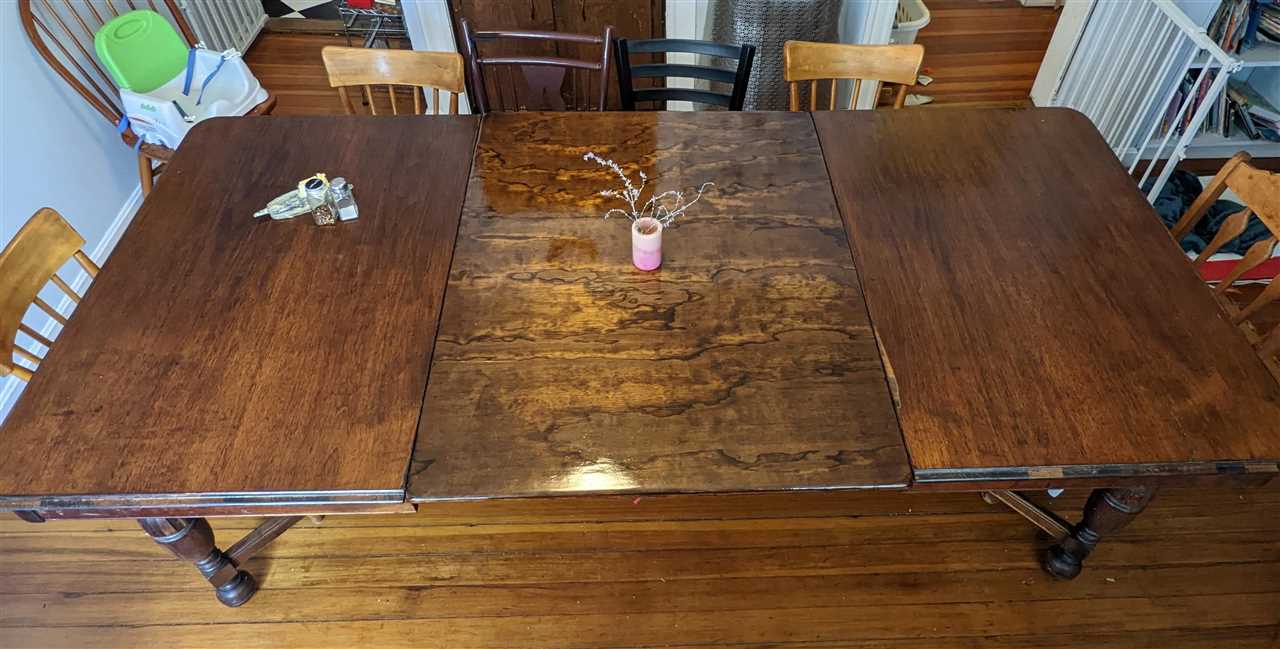
Table leaves are a valuable addition to any dining room. They provide extra surface area for larger gatherings and can be easily stored when not in use. To keep your table leaves in good condition and ensure their longevity, it is important to follow proper maintenance and care practices.
-
Regular Cleaning: Just like the main table surface, table leaves should be cleaned regularly to remove dust, dirt, and spills. Use a soft cloth or sponge dampened with mild soap and water to gently wipe the surface. Avoid harsh cleaners or abrasive materials that can damage the finish.
-
Storage: When not in use, table leaves should be stored in a clean and dry place. Ensure that the storage area is free from moisture, extreme temperatures, and direct sunlight, as these can cause warping or discoloration. Use a table leaf storage bag or a padded cover to protect the leaves from scratches and dents.
-
Handling: When handling table leaves, it is important to lift them with care to avoid any damage. Avoid dragging or sliding the leaves across the floor, as this can scratch the surface or loosen the joints. If the table has foldable leaves, follow the manufacturer’s instructions for proper folding and unfolding.
-
Protection: To protect the table leaves from heat, moisture, and spills during use, it is recommended to use table pads or heat-resistant mats. These can prevent damage from hot dishes, wet glasses, or accidental spills. Avoid placing heavy objects or sharp items directly on the table leaf surface to prevent scratches or dents.
By following these maintenance and care tips, you can ensure that your table leaves remain in excellent condition for years to come. Proper cleaning, storage, handling, and protection will help preserve the beauty and functionality of your dining table’s extension leaves.
Video:Table Leaf What it is and How to Use It
Kitchen Table Stamper Sweet Citrus Stamp a Stack Card Class – Big Squeeze – Part 2 of 3
Extensions Tutorial
How to Install a Table Leaf
Table leaves and pins
Hello, I am Beverly J. Sanders, the voice behind the diverse articles you come across on styves.co.za. My passion lies in exploring the nuances of home improvement and sharing tips that can help you transform your living space into a haven of comfort and style. From the latest trends in home decor to practical cleaning advice, I cover a broad spectrum of topics to cater to a wide variety of interests.
In my recent works, I have delved into the advantages of incorporating a horizontal Murphy bed into your home to save space without compromising on design and functionality. I also explored the benefits of having a free-standing electric fireplace that not only adds warmth to your home but also brings a sleek and modern design to any living space. My articles are a rich resource, offering insights into different products and home improvement strategies that can enhance the quality of your life.
I believe in the power of details; a belief that reflects in my comprehensive guides where I discuss even the overlooked aspects of home decor, such as the impact of baseboard trim in enhancing the overall look and feel of your home. I am constantly on the lookout for innovative solutions and products that can add value to your home and life.
Join me in my exploration as I continue to bring you the latest trends, tips, and insights in the home improvement world. Let’s create a home that is not just a place to live, but a reflection of style and personality.